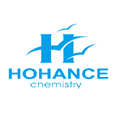Products Categories
| CAS No.: | 2298-07-9 |
|---|---|
| Name: | 4-Bromo-1-naphthylamine |
| Article Data: | 27 |
| Molecular Structure: | |
|
|
|
| Formula: | C10H8BrN |
| Molecular Weight: | 222.084 |
| Synonyms: | 1-Naphthylamine,4-bromo- (6CI,7CI,8CI);(4-Bromonaphthalen-1-yl)amine;1-Amino-4-bromonaphthalene;1-Bromo-4-aminonaphthalene;4-Bromo-1-naphthalenamine;4-Bromo-1-naphthalenemine;4-Bromo-1-naphthylamine;NSC 120524;NSC 16028; |
| EINECS: | 218-944-9 |
| Density: | 1.563 g/cm3 |
| Melting Point: | 102-103 °C(lit.) |
| Boiling Point: | 338.4 °C at 760 mmHg |
| Flash Point: | 158.5 °C |
| Appearance: | WHITE TO BROWN TO DARK VIOLET POWDER WHITE TO BROWN TO DARK VIOLET POWDER, FIBERS CRYSTALLINE POWDER AND/OR CHUNKS |
| Hazard Symbols: |
 Xi Xi
|
| Risk Codes: | 36/37/38 |
| Safety: | 26-37/39 |
| PSA: | 26.02000 |
| LogP: | 3.76570 |
- 483366-12-7(2S,4R)-1-Boc-2-cyano-4-hydroxypyrrolidine
- 361456-36-2METHYL (R)-(+)-ISOCYANATO-3-PHENYLPROPI&
- 5156-58-1N-(1-Benzyl-4-pipperidinyl)-N-phenylpropanamide HCl
- 81281-59-67-Benzylideneaminotheophylline
- 50288-62-5threo-Phenyl-2-piperidyl acetamide
- 82993-81-5D-threo-Ritalinic acid hydrochloride
- 47087-37-6Z-D-Glu-OMe
- 73441-42-6METHYL-5-CHLORO-2,2-DIMETHYLVALERATE
- 240444-70-62,3,5,6-Tetrafluor-4-(methoxymethyl)benzyl-2,2-dimethyl-3-(prop-1-en-1-yl)cyclopropancarboxylat
- 68439-39-4Poly(oxy-1,2-ethanediyl), alpha-(2-ethylhexyl)-omega-hydroxy-,

What can I do for you?
Get Best Price
Specification
The 4-Bromo-1-naphthylamine, with its CAS registry number 2298-07-9, has the IUPAC name of 4-bromonaphthalen-1-amine. And its product categories are including Amines; blocks; Bromides; Amines and Anilines; Halides; Anilines, Aromatic Amines and Nitro Compounds. As to its usage, it is usually applied as the intermediate of antithrombotic of clopidogrel hydrogen shlfate tablet.
The characteristics of this chemical are as below: (1)ACD/LogP: 3.28; (2)# of Rule of 5 Violations: 0; (3)ACD/LogD (pH 5.5): 3.28; (4)ACD/LogD (pH 7.4): 3.28; (5)ACD/BCF (pH 5.5): 182.38; (6)ACD/BCF (pH 7.4): 183.36; (7)ACD/KOC (pH 5.5): 1443.26; (8)ACD/KOC (pH 7.4): 1451.01; (9)#H bond acceptors: 1; (10)#H bond donors: 2; (11)#Freely Rotating Bonds: 1; (12)Polar Surface Area: 3.24; (13)Index of Refraction: 1.718; (14)Molar Refractivity: 56.02 cm3; (15)Molar Volume: 142 cm3; (16)Polarizability: 22.2×10-24 cm3; (17)Surface Tension: 55.3 dyne/cm; (18)Density: 1.563 g/cm3; (19)Flash Point: 158.5 °C; (20)Enthalpy of Vaporization: 58.18 kJ/mol; (21)Boiling Point: 338.4 °C at 760 mmHg; (22)Vapour Pressure: 9.84E-05 mmHg at 25°C; (23)Exact Mass: 220.984012; (24)MonoIsotopic Mass: 220.984012; (25)Topological Polar Surface Area: 26; (26)Heavy Atom Count: 12; (27)Complexity: 160; (28)Covalently-Bonded Unit Count: 1.
The production method of this chemical: naphthalen-1-ylamine could react to produce 4-Bromo-1-naphthylamine. This reaction could happen in the presence of the reagent of N-bromophthalimide and the solvent of diethyl ether. And it requires the reaction time of 10 min and the reaction temp. of 25 ℃.
.jpg)
Use of this chemical: 4-Bromo-1-naphthylamine could react with iodomethane to produce (4-bromo-[1]naphthyl)-dimethyl-amine. This reaction could happen in the presence of the reagent of KOH and the solvent of dimethylsulfoxide. And it requires the reaction time of 18 hours and the reaction temp. of 20 ℃.
.jpg)
When you are dealing with this chemical, you should be cautious. For one thing, it is irritating to eyes, respiratory system and skin and may cause inflammation to the skin or other mucous membranes. For another thing, it is harmful which may cause damage to health and it is dangerous to our body if by inhalation, in contact with skin and if swallowed. Therefore, you should wear suitable protective clothing, gloves and eye/face protection, and if in case of contact with eyes, rinse immediately with plenty of water and seek medical advice.
Additionally, you could obtain the molecular structure by converting the following datas:
(1)Canonical SMILES: C1=CC=C2C(=C1)C(=CC=C2Br)N
(2)InChI: InChI=1S/C10H8BrN/c11-9-5-6-10(12)8-4-2-1-3-7(8)9/h1-6H,12H2
(3)InChIKey: LIUKLAQDPKYBCP-UHFFFAOYSA-N
-
Premium Related Products

